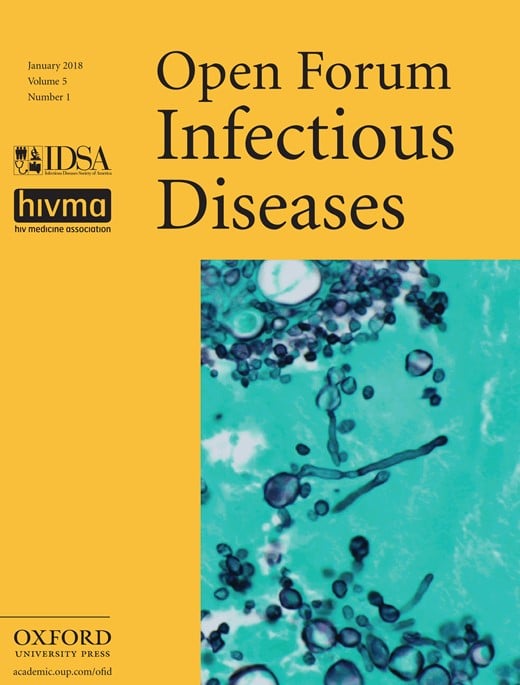
2405. In vitro Synergistic Activity of Sitafloxacin in Combination With Colistin Against Clinical Isolates of Multidrug-Resistant Acinetobacter baumannii in Thailand (2018)
Title : 2405. In vitro Synergistic Activity of Sitafloxacin in Combination With Colistin Against Clinical Isolates of Multidrug-Resistant Acinetobacter baumannii in Thailand
Researcher : Vipavee Rodjun2,Taniya Paiboonvong1,Jantana Houngsaitong1,Preecha Montakantikul2,
1 Department of Pharmacy, Faculty of Pharmacy, Mahidol University, Bangkok, Thailand
2 Faculty of Pharmacy, Siam University, Bangkok, Thailand
ฐานข้อมูลงานวิจัย มหาวิทยาลัยสยาม : –
Link to article: Open Forum Infectious Diseases, Volume 5, Issue suppl_1, November 2018, Pages S718–S719, https://doi.org/10.1093/ofid/ofy210.2058
Journal : Open Forum Infectious Diseases / Scopus
Citation : Rodjun, V., Paiboonvong, T., Houngsaitong, J., & Montakantikul,P. (2018). 2405. In vitro Synergistic Activity of Sitafloxacin in Combination With Colistin Against Clinical Isolates of Multidrug-Resistant Acinetobacter baumannii in Thailand. Open Forum Infectious Diseases, 5(Suppl 1), S718–S719. https://doi.org/10.1093/ofid/ofy210.2058

Anticholinergic discontinuation and cognitive functions in patients/ Thanompong Sathienluckana
Abstract
Introduction: Cognitive impairment is a core feature and shows the highest impact on functional outcome in patients with schizophrenia. There have been no previous studies investigating the role of the pharmacist in a multidisciplinary team on cognitive outcomes in patients with schizophrenia.
Purpose: We evaluated the impact of pharmacist intervention on cognitive outcomes in patients with schizophrenia by focusing on anticholinergic discontinuation.
Patients and methods: A prospective, open-label, randomized, controlled study was conducted. Patients with schizophrenia were randomly assigned to either the pharmacist intervention or usual care groups. In the pharmacist intervention group, the pharmacist identified drug-related problems (DRPs) and provided a pharmacotherapy suggestion, while there was no intervention in the usual care group. The primary outcome was mean change from baseline of executive function by using Wisconsin Card Sorting Test (WCST) perseverative errors within the pharmacist intervention group at week 12.
Results: A total of 30 patients completed the study (13 in the pharmacist intervention group and 17 in the usual care group). WCST perseverative errors at the end of the study within the pharmacist intervention group improved significantly from baseline (P=0.003). DRPs at week 12 were reduced by 85.19% and 9.76% in the pharmacist intervention and usual care groups, respectively. The most common intervention was the discontinuation of anticholinergics in patients without extrapyramidal side effects.
Conclusion: Added-on pharmacist intervention in a multidisciplinary team could help to improve cognitive functions in patients with schizophrenia by reducing DRPs and optimizing the drug therapy regimen, especially for anticholinergic discontinuation.
Keywords: pharmacist intervention, cognitive functions, schizophrenia, anticholinergic
Link to Publication: https://www.dovepress.com/anticholinergic-discontinuation-and-cognitive-functions-in-patients-wi-peer-reviewed-fulltext-article-IPRP
Bibliography :Thaompong Sathienluckana, Weerapon Unaharassamee, Chuthamanee Suthisisang, Orabhorn Suanchang, Thanarat Suansanae. (2018). Anticholinergic discontinuation and cognitive functions in patients with schizophrenia: a pharmacist-physician collaboration in the outpatient departmentx. Dove Medical Press, 409-414.

Applying the perceived probability of risk and bias toward optimism: Implications for travel decisions in the face of natural disasters (2018)
[dflip id="7244" type="thumb"][/dflip]Researcher : Bongkosh Rittichainuwat, Robert Nelson, Fitri Rahmafitria
Department : Service Industry Management, Siam University, Bangkok, Thailand
E-mail : Bongkosh N. Rittichainuwat ngamson@gmail.com
Abstract : Unperceived risk leads to lack of preparedness. This study aims to examine tourists’ risk perception and travel decisions using as variables demographics, knowledge about safety, and country of residence. Samples were gathered in Thailand, Japan, Australia, and Indonesia. A total of 916 completed questionnaires of five replicated surveys were used in this study. More than halve of the respondents whose country had been affected by the Indian Ocean tsunami in 2004 did not perceive tsunami risk when 10 years has passed. Frequency of tsunami occurrence was positively related to perceived tsunami probability. This study confirms the theory of probability that low frequency of a natural disaster results in unperceived risks. Even if their destination had a history of tsunamis, tourists’ perceived risk of another such occurrence happening during their visit is low (that is, the risk of natural disaster is low). While the literature in earth science found that residents of risky areas tend to be optimistic about the place where they live, our study extends the theory of optimistic bias to indicate that the same optimistic bias is applicable to tourists. Asia and Southeast Asia were perceived as tsunami-prone but tourists still travelled there. Our study found that tourist risk perception was related to frequency of tsunami occurrence and was destination specific. The perception of probability of a natural disaster is also related to proximity and past experience. Replications are necessary to validate results before generalization.
Publication : Tourism Management Vol.66 June 2018
Link to Publication: https://www.sciencedirect.com/journal/tourism-management/vol/66/suppl/C
Bibliography : Rittichainuwat, B., Nelson, R., & Rahmafitria, F. (2018). Applying the perceived probability of risk and bias toward optimism: Implications for travel decisions in the face of natural disasters. Tourism Management, 66, 221-232. DOI: 10.1016/j.tourman.2017.09.013.
Author details in Scopus: Rittichainuwat, Bongkosh Ngamsom
Scopus Citations: https://www.scopus.com/sources.uri?DGCID=Scopus_blog_post_check2015
Google Scholar Citations: https://scholar.google.com/citations?user=ifUlKJoAAAAJ&hl=en

Authenticity in Screen Tourism: Significance of Real and Substituted Screen Locations (2018)
Title : Authenticity in Screen Tourism: Significance of Real and Substituted Screen Locations
Researcher : Rittichainuwat, B., Laws, E., Scott, N., Rattanaphinanchai, S.
Department : Service Industry Management, Siam University, Bangkok, Thailand
E-mail : Bongkosh N. Rittichainuwat ngamson@gmail.com
Abstract : This article examines the meaning and significance of screen tourism location authenticity. The article analyses the interrelationship among places (real vs. substituted historical sites associated with tourists’ favorite films and TV programs) and activities (reenactment of photo shootings and costume rentals). The study finds a number of visitor segments go to screen tourism locations. For Screen Authentic Tourists, objective and existential authenticity do not matter as long as the destinations are associated with their favorite films. Screen tourism is a rapidly growing sector; this article examines its dynamics and evaluates various approaches to screen tourism authenticity, particularly theoplacity.
Publication : Journal of Hospitality and Tourism Research Vol.42 No.8 November 2018
Link to Publication: https://journals.sagepub.com/toc/jhtd/42/8
Bibliography : Rittichainuwat, B., Laws, E., Scott, N., & Rattanaphinanchai, S. (2018). Authenticity in screen tourism: Significance of real and substituted screen locations. Journal of Hospitality & Tourism Research, 42(8), 1274–1294. https://doi.org/10.1177/1096348017736568
Author details in Scopus: Rittichainuwat, Bongkosh Ngamsom
Scopus Citations: https://www.scopus.com/sources.uri?DGCID=Scopus_blog_post_check2015
Google Scholar Citations: https://scholar.google.com/citations?user=ifUlKJoAAAAJ&hl=en

Caring behavior of caregivers of elderly at Baan Bangkae social welfare development center (2018)
Title : Caring behavior of caregivers of elderly at Baan Bangkae social welfare development center
Researcher : Pornpimol Poomlittikul1* and Duangkamol Viroonudomphol1*
Department : 1* Faculty of Nursing, Siam University, Bangkok, Thailand
E-mail : v_duangkamol@yahoo.com
Abstract : Background: To study the self- care behaviors of elderly caregivers at Baan-Bangkae Welfare Development Center for older persons, Bangkok. Methodology: Descriptive research was conducted among thirty two elderly caregivers by purposive sampling technique. Data were collected using the questionnaires that constructed by the researcher during May- June 2016. Data were analyzed using basic statistic and stepwise multiple regression. Findings: The caregivers’ knowledge of self-care, belief in self-efficacy, caregivers role acceptance, social support and caregivers’ self caring behaviors of elderly persons score were as being in a moderate level. The respondents in perimeter which were different in sex age would be statistically difference at 0.05 in self-care behavior. Supportive factors for self-care behavior, sex, age, marital status, educational level, occupation and family’s monthly income, caregivers’ knowledge of self-care, caregivers role acceptance and social support predicted the caregivers’ self-care behaviors at 35% with statistically significant at 0.05.
Conclusion: These study results emphasized the rising public health of elderly. The goal was to reduce burden and depression and increase self-care by providing participants with information and tools to assist in their role as caregivers. Further research is needed to clearly understand the needs and determine effective interventions for our rapidly aging population and diminishing number of caregivers. Nurses are in a pivotal position to implement and evaluate evidence-based interventions for elderly or other dementias.
Keywords : caregivers’ self-care behavior, predictors of caregivers’ self-care behavior, elderly caregivers
Donwload PDF : Caring behavior of caregivers of elderly at Baan Bangkae social welfare development center
Proceeding : The 3rd International Conference of Multidisciplinary Approaches on UN Sustainable Development Goals UNSDGs 2018, Bangkok, Thailand
Link to Proceeding: http://dept.npru.ac.th/unsdgs2018/
Bibliography : Pornpimol Poomlittikul & Duangkamol Viroonudomphol. (2018). Caring behavior of caregivers of elderly at Baan Bangkae social welfare development center. In Proceeding The 3rd International Conference of Multidisciplinary Approaches on UN Sustainable Development Goals UNSDGs 2018 (p.84-90). Nakhon Pathom: Nakhon Pathom Rajabhat University.
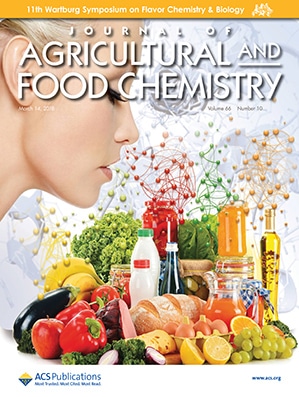
Comparison of Aroma Character Impact Volatiles of Thummong Leaves (Litsea petiolata Hook. f.), Mangdana Water Beetle (Lethocerus indicus), and a Commercial Product as Flavoring Agents in Thai Traditional Cooking (2018)
Researcher : Kanjana Mahattanatawee, Torsak Luanphaisarnnont, Russell Rouseff
Department : Food Technology Department, Faculty of Science, Siam University
E-mail : kanjana@siam.edu
Abstract : Thummong (Litsea petiolata Hook. f.) is a tree native to southern Thailand. The leaves of this tree are highly aromatic and used to flavor Thai dishes in place of the traditional water beetle Mangdana (Lethocerus indicus) for religious and cultural reasons. Total and aroma-active volatiles from both flavoring materials were compared using gas chromatography–olfactory (GC–O) and gas chromatography–mass spectrometry (GC–MS). The volatiles from Thummong leaves and the Mangdana water beetle were collected and concentrated using headspace solid-phase microextraction. A total of 23 and 25 aroma-active volatiles were identified in Thummong leaves and Mangdana, respectively. The major aroma-active volatiles in Thummong leaves consisted of 7 aldehydes, 5 ketones, and 3 esters. In contrast, the aroma-active volatiles in the water beetle consisted of 11 aldehydes, 3 esters, and 2 ketones. Both had (E)-2-nonenal as the most intense aroma-active volatile. The water beetle character impact volatile (E)-2-hexenyl acetate was absent in the leaves, but its aroma character was mimicked by 11-dodecen-2-one in the leaves, which was absent in the beetle. In addition, a commercial Mangdana flavoring was examined using GC–O and GC–MS and found to contain only a single aroma-active volatile, hexyl acetate. All three flavoring sources exhibited similar aroma characteristics but were produced from profoundly different aroma-active volatiles.
Link to Publication: Journal of Agricultural and Food Chemistry, Vol.66 Issue 10 March 2018
Bibliography : Mahattanatawee, K., Luanphaisarnnont, T., & Rouseff R. (2018). Comparison of aroma character impact volatiles of thummong leaves (litsea petiolata hook. f.), Mangdana water beetle (lethocerus indicus), and a commercial product as flavoring agents in Thai traditional cooking. Journal of Agricultural and Food Chemistry, 66(10), 2480-2484.
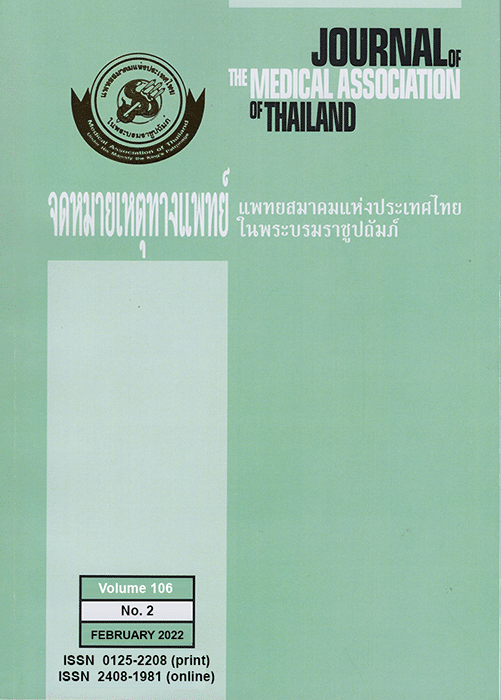
Correlation between transperineal and transvaginal sonography in cervical length measurement among normal thai pregnant women at 16 to 24 weeks of gestation (2018)
Title : Correlation between transperineal and transvaginal sonography in cervical length measurement among normal thai pregnant women at 16 to 24 weeks of gestation
Researcher : Kovavisarach, E., Kedthong, R.
Abstract : Background: Currently, cervical length is generally measured by transvaginal sonography (TVS) to predict preterm labor. Transperineal sonography (TPS) has been proposed as an alternative modality to TVS.
Objective: To compare cervical length measurements and pain scores of TPS and TVS in normal Thai pregnant women
Material and Method: A total of 40 normal Thai pregnant singleton women were enrolled at the antenatal clinic, Rajavithi Hospital between 1st December 2014 and 28th February 2015 at 16 to 24 weeks of gestation. Patients were excluded if they had history of and proved rupture of membranes, body mass index (BMI) >30 kg/m2, antepartum hemorrhage, or mass at perineum. The TPS and TVS techniques for cervical length measurement were performed in all cases by a single researcher (RK). Visual analog scale (VAS) score was used to assess the pain score (total = 10).
Results: Mean cervical lengths measured by TVS were slightly greater than those found using TPS (37.80 mm and 35.73 mm, respectively). The Pearson’s correlation coefficient between the two methods was 0.746, p<0.01. Mean pain scores determined by VAS score in TPS and TVS were 0.15 and 0.03, respectively (p = 0.02). The number of people whose VAS score was zero was similar with both methods (87.2% and 71.8%, respectively) (p = 0.095).
Conclusion: TPS could be used as an alternative method of TVS to assess CL in normal Thai pregnant women at 16 to 24 weeks of gestation because of its good correlation coefficient and lower pain levels.
Keywords: Cervical length, Transperineal sonography, Transvaginal sonography
Link to Academic article: http://www.jmatonline.com/index.php/jmat/article/view/9089
Journal : Journal of the Medical Association of Thailand, 2018, 101(Suppl.2)
Bibliography : Kovavisarach, E., & Kedthong, R. (2018). Correlation between transperineal and transvaginal sonography in cervical length measurement among normal thai pregnant women at 16 to 24 weeks of gestation. Journal of the Medical Association of Thailand, 101(Suppl.2), S19–S23.
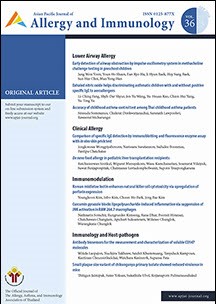
De novo food allergy in pediatric liver transplantation recipients (2018)
Title : De novo food allergy in pediatric liver transplantation recipients
Researcher : Clin.Prof.Suwat Benjaponpitak
Department : Faculty of Medicine, Siam University, Bangkok, Thailand
E-mail : med@siam.edu
Abstract : Background: Food allergy (FA) prevalence is increasing in pediatric liver transplantation (LT). However, the clinical course is still limited.
Objective: This retrospective cohort study aimed to identify the prevalence, risk factors, and the natural history of de novo FA in children post LT.
Methods: Medical records of pediatric LT recipients from Jan 2001 – Dec 2014 were reviewed. De novo FA was diagnosed by symptoms after exposure to culprit food occurring after LT, and improvement after diet elimination. FA was confirmed if reproduced symptoms after re-challenge or documented sensitization or indicated gastrointestinal eosinophilia.
Results: Among 46 post LT children, 54.3% developed de novo FA at a median time of 12.2 months [Interquartile range (IQR) 6.2, 21.3 months] post LT. The confirmed FA was 39.1%. Gastrointestinal symptom was the most common manifestation followed by skin, anaphylaxis, and others. Culprit foods were cow’s milk, shellfish, egg, wheat, soybean, peanut, coconut, fish and monosodium glutamate. The risk factors of FA were transplantation during age below 2 years [hazard ratio (HR), 2.62; 95% confidence interval (CI), 1.04 – 6.59; p = 0.03), atopic history in family (HR, 5.67; 95% CI, 1.33 – 24.12; p = 0.01), and Epstein-Barr (EBV) viremia (HR, 2.39; 95% CI, 1.02 – 5.63; p = 0.04).
Conclusions: de novo FA in pediatric LT is not uncommon. Age at LT younger than 2 years, family history of atopy, and EBV viremia are associated with developing FA. Development of tolerance after elimination culprit diets for 3 years is similar to general population.
Key words: Food allergy, liver transplantation, tolerance, outgrown, de novo food allergy
Link to Academic article: DOI: 10.12932/AP-080217-0007
Journal : Asian Pacific journal of allergy and immunology
Bibliography : Sinitkul, R., Manuyakorn, W., Kamchaisatian, W., Vilaiyuk, S., Benjaponpitak, S., Lertudompholwanit, C., & Treepongkaruna, S. (2018, September). De novo food allergy in pediatric liver transplantation recipients. Asian Pac J Allergy Immunol, 36(3), 166-174. doi: 10.12932/AP-080217-0007. PMID: 29161056.
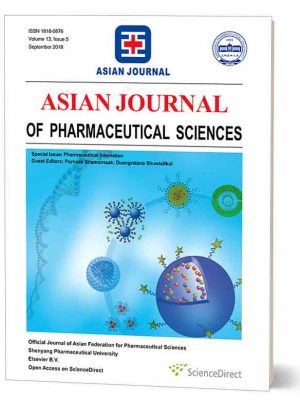
Design and characterization of monolaurin loaded electrospun shellac nanofibers with antimicrobial activity (2018)
Abstract
The aim of this study was to develop the water compatible form of coconut oil through nano-emulsification. The effect of different types and amounts of surfactants on the physical characteristics of nanoemulsions containing coconut oil was investigated. Coconut oil nanoemulsions containing varied amounts of surfactants including polyethylene glycol octyl phenyl ether (PGO), polyoxyethylene sorbitan monostearate (POS), polyethylene glycol hydrogenated castor oil (PHC), sodium lauryl sulfate (SLS) and poloxamer 407 (PLX) were formulated and comparatively evaluated for their physical properties. The results showed that the coconut oil nanoemulsions using PGO, POS and PHC as surfactants exhibited low percent creaming index indicating excellent stability, while those containing SLS and PLX demonstrated the higher percent creaming index suggesting lesser physical stability. The droplet sizes of nanoemulsions consisting of 5% (w/w) PGO, POS and PHC were 22.843, 4.458 and 0.162 µm, respectively. Thus, coconut oil nanoemulsions with the smallest size could be obtained when PHC was applied. Furthermore, the droplet size of nanoemulsions decreased from 33 µm to less than 200 nm with an increase in the amount of PHC from 1% to 10% (w/w). Additionally, the properties of coconut oil based nanoemulsions containing PHC were not changed through temperature cycling test. From these results, it was suggested that the fabrication of stable coconut oil nanoemulsions with small particle size could be easily achieved by using 5% (w/w) PHC as a surfactant. The knowledge gained from the study might provide the basic guideline for the fabrication of stable nanoemulsions for food, cosmetic and pharmaceutical fields in the future.
Link to Publication: https://www.sciencedirect.com/science/article/pii/S1818087617308267
Bibliography :Sirikarn Pengon, Nawinda Chinatangkul, Chutima Limmatvapirat, Sontaya Limmatvapirat. (2018). The effect of surfactant on the physical properties of coconut oil nanoemulsions. Asian Journal of Pharmaceutical Sciences, 409-414.

Ecteinascidin 770, A tetrahydroisoquinoline alkaloid, targeting the bacterial cell division protein FtsZ (2018)
Title : Ecteinascidin 770, A tetrahydroisoquinoline alkaloid, targeting the bacterial cell division protein FtsZ
Researcher : Phennapa Charoenwiwattanakij, Jaturong Pratuangdejkul, Montree Jaturanpinyo, Witaya Lowtangkitcharoen, Khanit Suwanborirux and Veena Nukoolkarn
Link to article : Chiang Mai Journal of Science, 2018, 45(7), pp. 2566–2580. https://epg.science.cmu.ac.th/ejournal/journal-detail.php?id=9652
Journal : Chiang Mai Journal of Science / in Scopus
Citation : Charoenwiwattanakij, P., Pratuangdejkul, J., Jaturanpinyo, M., Lowtangkitcharoen, W.,Suwanborirux, K., & Nukoolkarn, V., (2018). Ecteinascidin 770, A tetrahydroisoquinoline alkaloid, targeting the bacterial cell division protein FtsZ. Chiang Mai Journal of Science, 45(7), 2566–2580.
ฐานข้อมูลงานวิจัย มหาวิทยาลัยสยาม : –